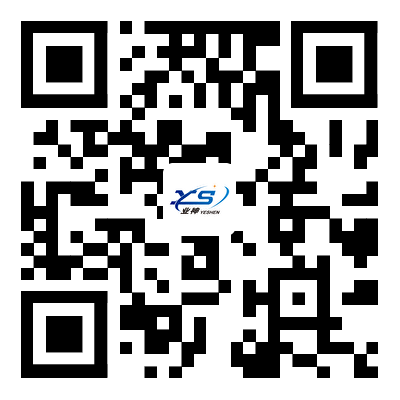What are the applications of manual matrix sorting chutes in the logistics industry
The manual matrix sorting chute is a key equipment in the logistics sorting system, which achieves efficient sorting of goods through the "matrix layout+manual operation" mode. Its core advantages lie in low cost, high flexibility, and adaptability to various types of goods, especially suitable for small and medium-sized items, multiple categories, and non standardized scenarios. The following is
The manual matrix sorting chute is a key equipment in the logistics sorting system, which achieves efficient sorting of goods through the "matrix layout+manual operation" mode. Its core advantages lie in low cost, high flexibility, and adaptability to various types of goods, especially suitable for small and medium-sized items, multiple categories, and non standardized scenarios. The following is an analysis of its typical application scenarios and characteristics in the logistics industry:
1. E-commerce warehousing and sorting center
Scenario characteristics: fragmented orders (daily order volume of 50-50000), rich SKUs (thousands to tens of thousands), diverse packaging specifications (30cm × 20cm × 5cm to 50cm × 40cm × 30cm).
Application mode:
Manual initial screening process: The unpacked scattered goods are sorted by category (such as clothing, beauty, daily necessities) through a chute to different temporary storage areas, replacing traditional conveyor belt sorting and increasing efficiency by 30% -50%.
Abnormal handling: For overweight (>10kg) and irregular shaped (such as spherical or irregular packaging) goods, they are manually judged and diverted to a special processing line through independent chutes to avoid automatic equipment jamming.
Case: A warehouse in a certain e-commerce area adopts 8 × 8 matrix chutes (64 sorting ports), with a manual sorting efficiency of 2000-3000 pieces per hour, which is twice as efficient as traditional manual sorting tables.
2. Express Distribution Center (for handling small and medium-sized items)
Scenario characteristics: High timeliness requirements (such as "next day delivery" orders accounting for more than 60%), recognition errors in waybill information (handwritten waybills and stained waybills accounting for 5% -10%).
Application mode:
Manual supplementary sorting: A manual matrix chute is set up at the end of the automated sorting line to manually scan and sort packages (about 5%) that have failed barcode recognition, ensuring a sorting accuracy rate of>99.9%.
Routing segmentation: For different districts and counties in the same province (such as Guangzhou, Shenzhen, Foshan, etc. within Guangdong province), packages are manually judged and placed into corresponding chutes to reduce the routing hierarchy pressure of automated equipment.
Data: A certain express distribution center is equipped with 10 pickers in the manual chute section, with a single hour processing capacity of 800-1200 abnormal items and a sorting error rate of less than 0.1%.
3. Cross border e-commerce sorting (multilingual/multi specification scenarios)
Scenario characteristics: International package waybills come in various languages (English, Japanese, French, etc.), with significant differences in packaging specifications (envelopes account for 30%, irregular items account for 20%), and customs clearance documents attached (such as invoices and certificates of origin).
Application mode:
Language/Destination Sorting: Manually place packages into corresponding chutes based on the language of the waybill (such as US, JP, DE), adapting to small language waybills that are difficult for automated equipment to recognize.
Document integrity verification: During the sorting process, synchronously check whether the customs clearance documents are exposed or detached. If any problems are found, they are transferred to the "document replenishment area" through an independent chute to avoid the risk of international logistics returns.
Advantage: Compared to fully automated sorting, manual intervention can reduce the return rate of cross-border packages caused by information recognition errors (from 3% to below 0.5%).
4. Less than truckload logistics sorting (light and small parcel dedicated line)
Scenario characteristics: Mixed types of goods (accessories, electronic components, light industrial products), single piece weight mostly ranging from 1-5kg, and demand for dedicated transportation (such as the "Jiangsu Zhejiang Shanghai Pearl River Delta" dedicated line).
Application mode:
Dedicated line directional sorting: Manually sort the goods to the corresponding chute according to the destination city (such as Hangzhou, Suzhou, Nanjing), and the chute outlet is directly connected to the dedicated truck container, reducing secondary handling.
Fragile item protection: For glass products, precision instruments, etc., manual sorting adds buffering materials (such as bubble wrap) and places them through independent chutes, reducing the damage rate by 60% compared to automated sorting.
Case: A less than truckload logistics company has set up 12 dedicated line chutes in the Yangtze River Delta distribution center, and the manual sorting time for dedicated line goods has been increased to 15 minutes per vehicle, saving 70% of time compared to traditional forklift handling.
5. Reverse logistics sorting (return processing)
Scenario characteristics: The status of returned goods is complex (packaging damage, missing accessories, stains), requiring manual quality inspection (such as whether clothing tags are complete, electronic product function testing).
Application mode:
Integration of quality inspection and sorting: After manual quality inspection, products that can be resold are sorted through the chute to the "good product area", defective products are sorted to the "repair/scrap area", and unsold products are sorted to the "promotion area", with a processing efficiency of 500-800 pieces/person/hour.
Packaging recycling: Simultaneously remove the original packaging of the returned goods, transport the cardboard boxes to the "cardboard recycling line" through a chute, and transport the plastic packaging bags to the "recycled material area" through another chute, achieving a packaging recycling rate of over 85%.
 0512-52430590
0512-52430590
 0512-52430590
0512-52430590

 WeChat number:業(yè)神物流設備
WeChat number:業(yè)神物流設備
